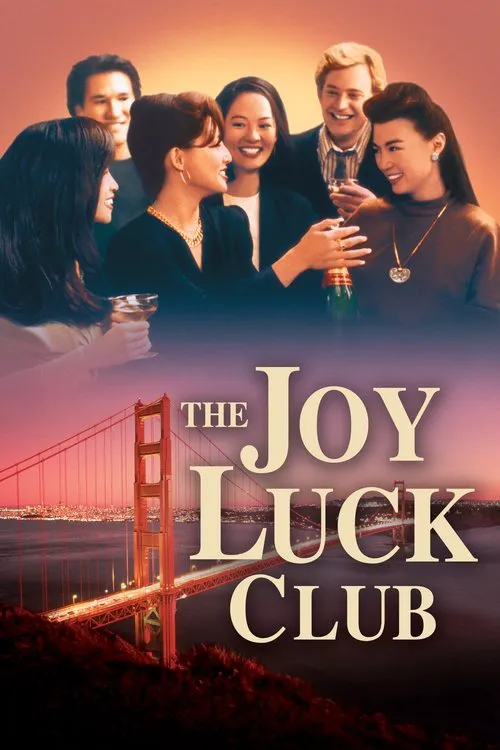The Joy Luck Club

Plot
The Joy Luck Club, a poignant and deeply moving drama directed by Wayne Wang, delves into the complexities of an American-Chinese identity and the generational divide between mothers and daughters. Through a series of poignant flashbacks, the film masterfully navigates the intricate and often fraught relationships between four mothers, born in the tumultuous era of feudal China, and their American-born daughters. The Joy Luck Club revolves around the lives of Suyuan Woo, Lindo Jong, Ying-ying St. Clair, and An-mei Hsu – four Chinese mothers who, as young women, had left behind the trauma and hardships of their ancestral homeland. These resilient women, fueled by a deep-seated desire for freedom and a brighter future, had immigrated to America, where they faced immense cultural, social, and economic challenges. United in their struggles and strengthened by their shared experience, they banded together to form the Joy Luck Club, a makeshift gathering place for Chinese immigrants to share laughter, support, and community. Through the narrative, Wang skillfully weaves together multiple storylines, each one revealing the intricately intertwined worlds of these mothers and their American-born daughters – June Woo, Waverly Jong, Lena St. Clair, and Rose Hsu Jordan. As the film unfolds, it becomes clear that these four mothers, despite their unwavering dedication to their new country, harbored deep emotional scars, forged from the traumas they experienced during their tumultuous and often brutal lives in feudal China. The most poignant of these flashbacks is that of June's mother, Suyuan Woo, a strong-willed and fiercely determined woman, driven by a fierce longing for freedom and a desire to create a better life for herself and her daughters. Born into the impoverished and war-torn countryside of China, Suyuan's early life was marked by hardship and struggle. Her recollections of the devastating effects of the great famine, as well as her harrowing experiences during World War II, serve as a heartbreaking testament to the cruelty and brutality that she endured. The painful memories that Suyuan shared with June – a poignant expression of the love and longing that bound them together – serves as the emotional axis upon which the entire narrative revolves. The character of Lindo Jong, another founding member of the Joy Luck Club, shares an equally poignant story with her daughter, Waverly. Lindo's account of a traumatic family event – the sacrifice she made for her own survival, and the emotional consequences that forever altered the dynamics within her family – serves as a testament to the unyielding resilience and determination of these women. As the film transitions forward in time, it becomes clear that the relationships between these mothers and their daughters are defined by both the love and the painful dissonance that exists between generations. While June's relationships with her mother and her mother's friends reveal the complexities of cultural identity and the struggles of assimilation, Waverly's struggles as a competitive tennis player serve as a poignant metaphor for the American-born daughters' attempts to claim their own identities. Through the poignant and often heart-wrenching narrative of the Joy Luck Club, the filmmakers raise fundamental questions about identity, belonging, and cultural assimilation. At the heart of this film lies the timeless and universal struggle to reconcile past and present, tradition and modernity, and the deep-seated desire to find a sense of home and belonging in an often-disorienting and fragmented world. As the story reaches its poignant conclusion, Wang masterfully weaves together the intricate and interconnected narratives of these four women, transcending the complexities and nuances of their stories, and revealing a rich tapestry of human experience – a poignant testament to the unbreakable bonds of love, connection, and the ineradicable desire for a place to call home.
Reviews
Recommendations




